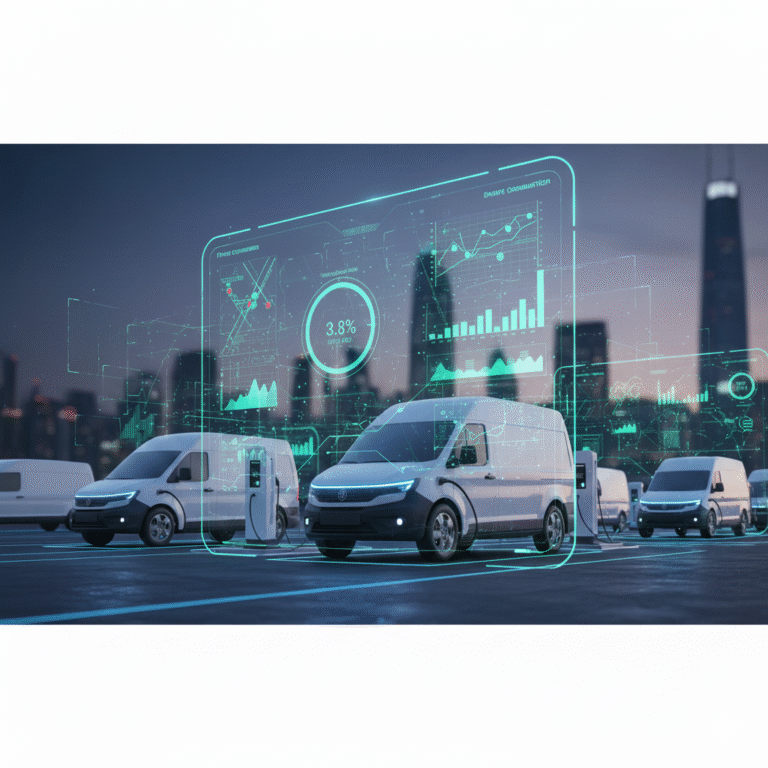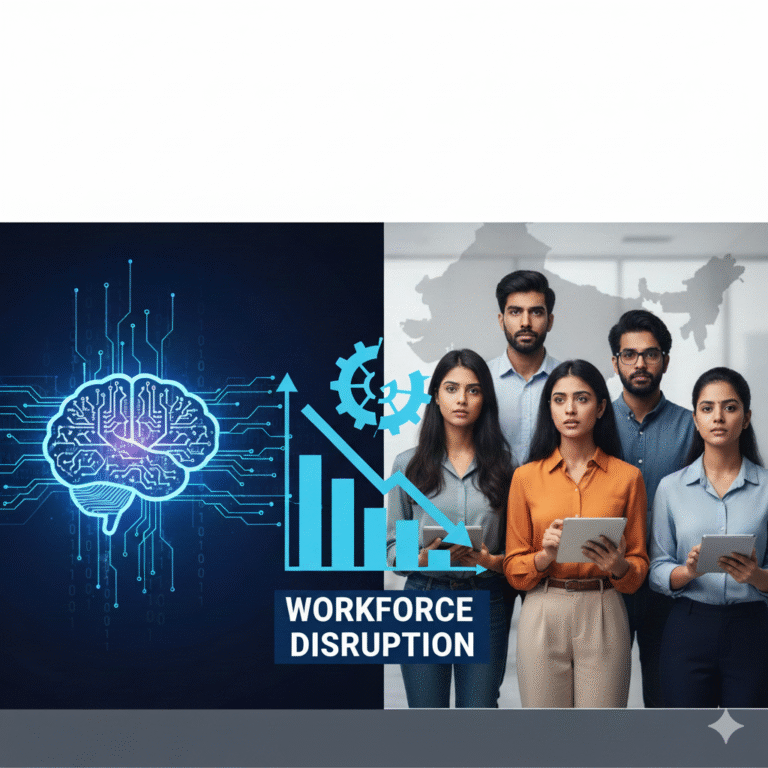Key Highlights
- Economic Impact: Traffic congestion costs Delhi, Mumbai, Bengaluru, and Kolkata ₹1.47 lakh crore annually, with peak-hour travel times 50% longer than off-peak periods
- Safety Crisis: Over 1.68 lakh deaths and 4.43 lakh injuries in 2022, representing 474 daily fatalities or one death every three minutes
- Technology Solutions: Smart Cities Mission integrates ITS with AI-driven traffic management, reducing congestion by 10-15% through real-time optimization
- Policy Framework: Motor Vehicles Amendment Act 2019 and National Road Safety Policy focus on digitization, stricter enforcement, and infrastructure improvement
- Global Learning: Singapore’s congestion pricing reduces traffic by 25-30% in CBD areas, offering replicable models for Indian cities
Traffic congestion has emerged as one of India’s most pressing urban challenges, threatening economic productivity, environmental sustainability, and public health. With over 1.68 lakh lives lost in road accidents during 2022 and congestion costing the economy nearly ₹1.5-2 lakh crore annually, the crisis demands urgent, systemic interventions.
Understanding the Congestion Crisis
Economic Burden and Productivity Loss
Traffic congestion in India’s major cities imposes staggering economic costs. A Boston Consulting Group study revealed that Delhi, Mumbai, Bengaluru, and Kolkata lose ₹1.47 lakh crore annually due to peak-hour congestion. During rush hours (7-9 AM and 6-8 PM), commuters spend one-and-a-half times longer traveling compared to off-peak periods.
Bengaluru faces particularly severe challenges, with productivity losses estimated at 7.07 lakh hours in 2018 alone due to late arrivals caused by traffic delays. The city experiences 40.73% congestion levels, with peak-hour speeds dropping to just 17.5 km/hour from 32.4 km/hour.
Public Health and Safety Impact
The National Crime Records Bureau reported 4,61,312 road accidents in 2022, resulting in 1,68,491 fatalities and 4,43,366 injuries—representing an alarming 11.9% year-on-year increase in accidents. These statistics translate to 474 lives lost daily or one death every three minutes.
Vehicle emissions contribute approximately 30% of particulate pollution in cities like Delhi. Prolonged traffic idling worsens air quality and obstructs India’s climate commitments under the Paris Agreement.
Urban Infrastructure Strain
Indian cities face unique infrastructure challenges. Kolkata has merely 6% of its area under road networks compared to 23% in Delhi and 17% in Mumbai. Despite Delhi’s extensive road infrastructure, it remains one of the most congested cities, highlighting that simply building more roads cannot solve congestion.
Root Causes of Urban Mobility Crisis
Rapid Urbanization and Motorization
India’s urban population grew from 27.7% in 2001 to 31.1% in 2011, with current estimates reaching 40%. This rapid urbanization, coupled with inadequate public transport infrastructure, has forced citizens toward private vehicle ownership.
The rise in private vehicle dependency is evident across cities. Delhi has the highest 45% share of people using private cars for commuting, while Bengaluru follows at 38%. Even cities with lower car shares like Bengaluru (7%) and Chennai (7%) experience severe congestion due to high two-wheeler dependency.
Inadequate Public Transport Systems
Mumbai tops the list for public transport usage, followed by Kolkata, while Bengaluru performs worst in this metric. The absence of comprehensive public transport networks forces citizens to rely on private vehicles, exacerbating congestion.
Poor Traffic Management and Enforcement
Studies from Bhubaneswar identify four critical elements for improving urban mobility: strict traffic law implementation, adequate parking facilities, decentralization, and controlling roadside activities. The lack of these elements across Indian cities contributes significantly to congestion.
Urban Planning Deficiencies
Poor land-use planning and the absence of dedicated lanes for buses, bicycles, and emergency vehicles worsen traffic flow. Cities often lack integrated transport planning that connects residential, commercial, and employment hubs efficiently.
Technology-Driven Solutions and Policy Initiatives

Motor Vehicles (Amendment) Act 2019
The Motor Vehicles (Amendment) Act 2019 introduced significant reforms including digitized licensing systems, increased renewal periods for transport licenses, and stricter penalties for violations. However, concerns remain about removing minimum educational qualifications for transport drivers and allowing direct applications for heavy vehicle licenses.
Smart Cities Mission and ITS Integration
The Smart Cities Mission aims to integrate Intelligent Transportation Systems (ITS) across urban centers. Indigenous solutions like the Onboard Driver Assistance and Warning System (ODAWS), Bus Signal Priority System, and Common Smart IoT Connectivity (CoSMiC) platform have been developed under the ITS initiative.
These systems enable real-time traffic monitoring, predictive congestion management, and priority signals for public transport. AI-driven traffic management systems can optimize traffic flow, reduce congestion by 10-15%, and improve overall transportation efficiency.
National Road Safety Policy
The National Road Safety Policy focuses on creating safer road infrastructure, promoting awareness and education, enforcing stricter regulations, and improving emergency response systems. Key initiatives include:
- Strengthening road engineering through safety audits and black spot identification
- Integrating road safety education in school curricula
- Enhancing traffic police capabilities with modern equipment and technology
- Establishing trauma centers along major highways for emergency response
Global Best Practices: Learning from Singapore
Congestion Pricing Success
Singapore’s Electronic Road Pricing (ERP) system, introduced in 1998, demonstrates effective congestion management. The system charges variable tolls ranging from $0.32 to $1.90 for passenger vehicles and up to $3.80 for large vehicles.
Key features of Singapore’s success include:
- Dynamic pricing adjusted every three months based on traffic conditions
- Flexible boundaries that expand with urban growth
- Technology integration using overhead tolling systems
- Revenue recycling into public transport improvements
The system reduced traffic in the central business district by 25-30% during peak hours while maintaining optimal traffic speeds of 45-65 km/hour.
Lessons for Indian Cities
Indian cities can adapt Singapore’s model by implementing:
- Area-based congestion pricing for central business districts
- Graduated toll structures based on vehicle type and time
- Investment of revenues in public transport infrastructure
- Real-time monitoring and dynamic pricing adjustments
Way Forward: Integrated Solutions for Sustainable Mobility
Technology and Innovation
Artificial Intelligence and IoT integration can revolutionize urban mobility. Smart parking systems, real-time traffic optimization, and predictive analytics can reduce congestion by 15-20%. Cities should invest in:
- Intelligent traffic signal systems with adaptive timing
- Smart parking solutions to reduce cruising for parking
- Real-time information systems for commuters
- Integrated mobility platforms connecting various transport modes
Non-Motorized Transport Promotion
Dedicated cycling lanes, pedestrian-friendly infrastructure, and bike-sharing programs can reduce dependency on motorized vehicles. Chinese cities have demonstrated that bike-sharing significantly reduces congestion, particularly in dense urban areas.
Public Transport Enhancement
Bus Rapid Transit (BRT) systems, metro networks, and electric buses can provide efficient alternatives to private vehicles. Priority signal systems for public transport can reduce travel times and attract more users.
Policy and Governance Reforms
- Integrated urban planning connecting transport, housing, and employment
- Parking pricing reforms to discourage private vehicle use in congested areas
- Emission-based vehicle taxation to internalize environmental costs
- Strict enforcement of traffic regulations using technology
Linking to SDG 11: Sustainable Cities
India’s urban mobility initiatives directly support SDG 11 (Sustainable Cities and Communities). Effective traffic management contributes to:
- Reduced air pollution and improved public health
- Enhanced economic productivity through efficient transport
- Social equity through accessible public transport
- Climate action through reduced emissions
Financing and Implementation
Public-Private Partnerships
Successful implementation requires collaboration between government, private sector, and civil society. Revenue models from congestion pricing can fund public transport improvements while private companies can contribute technology and innovation.
Pilot Programs and Scaling
Cities should implement pilot programs in specific corridors before city-wide deployment. Successful models can be replicated across similar urban contexts with appropriate modifications.
Conclusion
Traffic congestion in India represents a complex challenge requiring multi-dimensional solutions combining technology, policy reform, and behavioral change. The integration of Intelligent Transportation Systems, implementation of congestion pricing mechanisms, and promotion of sustainable mobility options offer pathways to manageable urban transport.
Success depends on coordinated action across multiple stakeholders, sustained political commitment, and citizen participation. By learning from global best practices while adapting to Indian contexts, cities can transform their mobility landscape and achieve the vision of sustainable, inclusive, and efficient urban transport systems.
The journey toward congestion-free cities requires immediate action, long-term planning, and unwavering commitment to people-centric urban development. As India urbanizes rapidly, the decisions made today will determine whether cities become engines of growth or gridlocked obstacles to progress.
Sources:
PIB
Down to Earth
Possible Mains Questions
- “Traffic congestion in Indian cities poses multidimensional challenges to urban sustainability.” Analyze the economic, environmental, and social impacts of traffic congestion and evaluate the effectiveness of technology-driven solutions. (250 words)
- Examine the role of Intelligent Transportation Systems (ITS) in addressing urban mobility challenges in India. How can lessons from Singapore’s congestion pricing model be adapted to Indian contexts? (250 words)
- “Sustainable urban mobility requires integration of infrastructure development, policy reforms, and behavioral change.” Critically assess India’s approach to traffic management in the context of SDG 11. (250 words)









+ There are no comments
Add yours